Lands of wine and sunshine
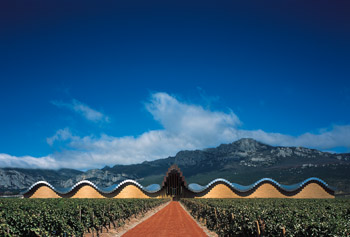
The wine styles of Spain and Portugal are distinct and consumers are starting to become more familiar with Spain’s less well-known regions and with Portuguese wines in general
8 July 2009
The Iberian Peninsula is a treasure trove for wine lovers, with great diversity of styles, traditions, grape varieties, and climate conditions.
Spain has become one of the most prolific and celebrated wine regions of the world, producing over 11 million hectolitres annually, almost 40% of which is exported.
Rioja has long dominated the Spanish overseas market, with both traditional and modern styles proving popular. However, other regions such as Navarra, Priorat, Ribera Del Duero, and Riaz Baixas in northern Spain, are gaining ground too. While the country has become almost synonymous with robust fruity, well-oaked reds, white grapes including elegant verdejo, refreshing aromatic albariño, and different styles of viura, have grown in consumers’ awareness and offer interesting alternatives to more common international white varieties.
Portugal is also growing in consumers’ awareness, and following the recent drive by the Portuguese Embassy in Ireland, Irish wine drinkers are getting better acquainted with what this region has to offer. Varieties from Portugal such as touriga nacional, touriga franca and baga, which are used in Port, can yield big, juicy red wines of high quality and character. Among its white varieties, the likes of alvarinho and loureiro of the Vino Verdhe region can offer far superior alternatives to many ‘international-style’ sauvignon blancs, while antao vaz and rabigato, can produce weightier, more full-bodied whites; some reminiscent of Burgundy, according to ShelfLife’s Helen Coburn.
The Douro region too can offer bold, juicy reds to compete with the best of them from its European rivals. Portugal is definitely a region to watch out for and certainly one to create a point of difference in any offering.
Spain has it all

Campo Viejo blends centuries-old craftsmanship with modern techniques

Campo Viejo blends centuries-old craftsmanship with modern techniques
A “revelation” in Spanish whites, according to Wines from Spain, the country’s star white grape albariño from the wind swept north-western coast of Galicia continues to win plaudits from the punters. With its elegant yet full body and delicious lime and peach aromas, it is the perfect accompaniment for seafood, which is abundant in its native region. It doesn’t stop here though, as Wines From Spain has many other whites lined up for summer; verdejo, loureira and viura, to name but a few, are also perfect for summer barbecues and alfresco dining, with many different examples to choose from.
Spain is also undergoing a “revolution” in red wine making. Once renowned primarily for rich, oak-aged, velvety Riojas, the region now boasts a whole host of red wine styles as new-wave winemaking has hit the vineyards over the last 20 years. With a wealth of native and international grapes, Spain produces everything from young fruit-driven wines to seriously deep and long lasting examples.
Finally, let’s not forget one of Spain’s nicest treats for summer, its world-renowned Cava. Indeed, Spanish bubbles pose a good opportunity this year, as Cava’s price-quality ratio often offers the most outstanding value for money around. A glass of authentic cava made in the time honoured traditional method will add sparkle to any wine list at an attractive price.
For more information visit www.winesfromspain.com.
Making history
Bodegas Campo Viejo has been part of the history of winemaking in Rioja from the outset. Its origins date back to 1959 when two small Rioja wine cellars with a long tradition joined forces to create Bodegas Campo Viejo. The name of the winery comes from its proximity to a vineyard of very old vines which the winemakers referred to as the ‘campo viejo’ or ‘old field.’
Today, in a state-of-the-art winery located above the historic cellars, Juan Alcorta Bodega, the legendary Campo Viejo blends centuries-old craftsmanship with advanced modern techniques. The result is a unique wine with the proud structure of the old world and the approachable style of the new.
Campo Viejo produces a range of award winning wines including Crianza, Reserva and Gran Reserva, across a variety of price points. For further information contact Irish Distillers Pernod Ricard on 01 2129000

Gran Feudo Reserva 50cl
Gran Feudo Reserva 50cl
New format to meet new needs
With consumer trends moving towards healthier living choices and a desire to reduce alcohol consumption levels, Gran Feudo has developed a 50cl bottle format for its popular Reserva line. Gran Feudo Reserva 50cl is the perfectly sized bottle of wine that can be shared between two people.
Research has found that wine drinkers often tend to finish a 75cl bottle to avoid waste. And their concerns about volume consumption are coupled with their concerns about the increasing alcoholic levels of some wines, leaving consumers looking for a happy medium. For those consumers who do not wish to over-indulge but find that a half bottle is often not enough for two, the 50cl format is a perfect solution and an automatic moderator of consumption.
Retailing with an RSP of €9.99, it is the perfect line extension for the Gran Feudo range. Distributor Ampersand is currently promoting Gran Feudo Reserva 50cl. For more information please contact your Ampersand representative.
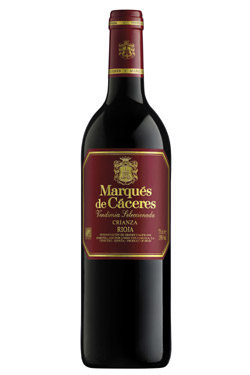
Marqués de Cáceres from Rioja is now available exclusively through Cassidy Wines

Marqués de Cáceres from Rioja is now available exclusively through Cassidy Wines
Spanish ambassador
Founded in 1970 by Enrique Forner, in Cenicero in the heart of La Rioja, Bodegas Marqués de Cáceres has today become a reputed brand of international renown. From the very beginning the bodega has always been an innovator with the one constant goal of creating high quality wines with great personality. By selecting the best vineyard sites in Rioja Alta, working closely with the growers and installing the very best equipment to ensure the meticulous vinification and ageing of its wines, Marqués de Cáceres has developed a range of wines that are outstanding in their complexity, finesse and elegance.
Today Marqués de Cáceres is still a family run company and the family motto “Wine means everything to us” explains why it has remained a top ambassador for the wines from Rioja around the world. Marqués de Cáceres is now available exclusively through Cassidy Wines.
Three centuries of winemaking
The Torres family has been linked with wine for more than three centuries, during which they have produced the finest of wines to the highest of quality.
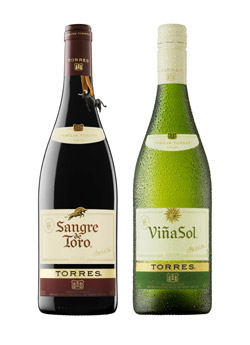
To date 2009 has been a good year for Torres wines with sales in Ireland up 30%
The Torres range is quite extensive and has an offering for every wine taste and every consumer pocket, from the hugely popular Viña Sol and Sangre de Toro wines of Cataluyna, to the premium and super-premium wines from Ribera del Duero, Priorat, Penedès, and most recently, Rioja. To date 2009 has been a good year for Torres wines with sales in Ireland up 30%. May saw Torres sponsor the exclusive Garden Party at the very successful Bloom Festival in the Phoenix Park.
This year Bodegas Torres has also become the first winery to be placed on the ‘Green List,’ which is published by prestigious trade publication, the Drinks Business. Torres is firmly committed to the environment and this is epitomised in Miguel Torres’ statement: “There is no such thing as a good wine that does not respect nature.”
Paul Nolan, marketing manager with Findlater Wine & Spirit group commented: ‘We are delighted with Torres becoming the first ever winery on the Green List. It is refreshing to see a winery that is not only committed to producing the highest quality wines but that is also committed to looking after the environment as they do so.”
The classic rosé
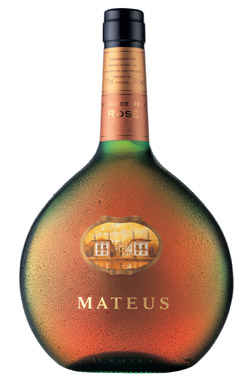
Mateus Rosé is set to roll out a new screw cap format
One cannot think of rosé without Mateus coming to mind. The iconic brand has been on our shelves since 1942 yet still fails to disappoint on flavour, freshness and versatility. The distinctive bottle allows for stand-out on shelf while the distinct flavour of Mateus Rosé remains with the consumer and creates strong associations, which accounts for the brand’s continued success. Sales of rosé tend to rise during the summer months, making it a key season for Mateus especially.
July will see the roll out of a new screw cap for Mateus Rosé. This will eliminate any cork taint that can occur and will ensure the fruity and slightly fizzy characteristics are fully retained. Neck collars will communicate the benefits of the new closure and will provide stand out on shelf.
Paul Nolan, marketing manager with Findlater Wine & Spirit Group adds: “Mateus Rose has been and continues to be a big success here in Ireland. It’s the any time wine, appealing, easy to drink and stylish. We are excited about the new screw cap as we feel it will modernise the brand while maintaining its contemporary style.”
Rioja down to a fine art
Rioja is undoubtedly Spain’s best-known wine producing region. Here tempranillo has produced smooth, rich wines of deep fruit character and robustness that have been acclaimed the world over. Don Carlos, the leading importer of Spanish food products to Ireland, has three interesting Rioja wines under the brand Don Carlos Velazquez, named after one of Spain’s greatest painters. These are Cosecha 2004, which has more body and fruity taste, Reserva 2001, smooth but still oaked, and Gran Reserva 2000, a full bodied Rioja. All three wines are a deep red colour that offer a smooth, robust flavour that ages wonderfully, ideal to serve with game or roast meats.
For more information on Greenlea Wines phone 041 9870300.
Febvre new distributor of Cune wines
Wine importer, Febvre & Company Limited, is pleased to announce that it has been appointed distributor for Spanish wineries Cune, Viña Real and Contino in the Irish Republic.
Founded in 1879 by two brothers Eusebio and Raimundo Real de Asúa, Cune is one of Spain’s oldest and most prestigious bodegas. Compañía Vinícola del Norte de España (CVNE) is now run by the fifth generation of the founding family. Cune became the best selling Rioja brand in Spain in 2008 and has been a well-established brand on the Irish market for many years.
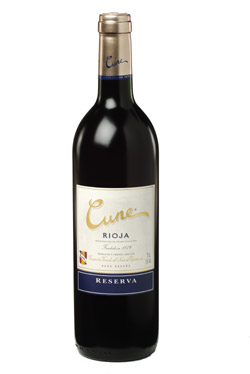
Founded in 1879, Cune is one of Spain’s oldest and most prestigious bodegas, and became the best-selling Rioja brand in Spain in 2008
Cune wines will be distributed to the off-trade in 75cl and quarter bottles. The Viña Real and Contino ranges will be available to the on-trade and to independent off-licences. For more information contact your local Febvre representative or phone 01 2161400.
My favourite….
Alexandra Young, Oddbins
“Spain is going through a massive overhaul at the moment, but Rioja will remain at 50% of the category. The remainder will be made up from emerging Dos, including Costers de Segre, Valencia Monterri and Monsant. Our total range will remain at around 45 products. Our Portuguese range is small at present, but this will increase, and we are looking to add a red Duoro.
The Portuguese red Quinta de Bons-Ventos is extraordinarily good value and sells like hot cakes at €8.49 for a single bottle, or €6.79 as part of a mixed dozen.
I have chosen the spanish red Casa de la Ermita because it is an organic wine. The producers use pheromones to control insect populations, since these natural chemicals work by disrupting the mating patterns of the insects. It is hand picked from old vines on very poor soil and is then put in half full stainless steel tanks to facilitate fermentation using natural yeasts. After two weeks, the wine is pressed from the skins. There follows malolactic fermentation and the wine is then racked from the lees and filtered and fined before bottling. It is €11.99 a bottle or €9.99 as part of a mixed dozen.
The Spanish white, Luna Blanca, I’ve chosen as it represents a stunning example of the new world style Spain is now introducing. It is a splendidly spritzy and lively white made from verdejo whites. This retails at €11.49 a bottle, or €9.19 as part of a mixed dozen.



 Print
Print

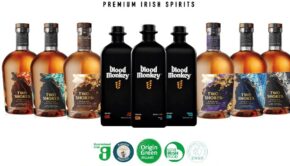




Fans 0
Followers